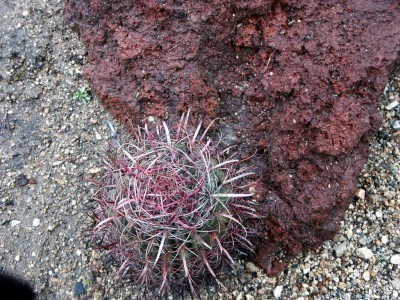






Feather rock planters set an interesting tone in the garden. They have a prehistoric quality that pairs well with succulents, cacti, and unique foliar plants. Plants in lava rock can grow into the porous, pocked surface and survive without much root space. For this reason, choose plants that have shallow root zones. Lava rock houseplants are also common gifts and novelty gardening situations.
There is a difference between lava rock and feather rock, however. A little more information will help you decide which is right for your landscape design.
Feather rock forms during volcanic activity. It is caused by the reaction of air and lava which “churns” the lava making it foamy and porous.
Lava rocks are any form of rock that is created when lava or magma erupts through the earth’s surface and cools. As such, there are many types of lava rock such as pumice, basalt, obsidian or feather rock. Any of these rocks are called igneous rocks and have very glass-like composition which shatters into razor sharp shards.
Feather rock is lighter than most igneous rocks, although not as light as pumice, which almost has no weight. It is useful in landscaping as a hardscape item, feather rock planter or simple display.
Porous forms of lava rock are relatively easy to drill or chisel into. You can make dimples or depressions or simply drill holes for smaller plants. Plants, such as air plants or some epiphytic varieties, thrive in volcanic rock.
Lava rock houseplants are commonly sold in grocery floral departments and garden centers. They make unique and easy-to-care for planting situations. Plants in lava rock that work well are Tillandsia, succulents, and some grasses. The larger planters support almost any variety of annuals, riparian plants and indoor houseplants. Really the only plants that don’t work well are those that need constant moisture and large plants with vast root systems.
One of the easiest forms of plants that love to grow in feather rock planters are the succulents. You can make a fascinating display filled with a variety of form, color and texture by using little succulents. Echeveria, sedum, trailing Euphorbia and many others will add their appeal to the distinctive look that growing plants in volcanic rocks produces.
Succulents have shallow root bases and install easily in depressions in the rock. Use thick gloves when handling feather rock or other lava rocks. The edges are extremely sharp. Use eye protection if you are drilling or chiseling into the material.
Once you have the hole or dimple you wish, press potting soil into the bottom and then add the plant. Firm the soil around the plant to anchor it and water it well. A mister or water bottle works great for this purpose.
Follow general plant care for the variety of succulents you installed. In colder climes, use this method to make lava rock houseplants, permanent planters with matchless appeal.
Tips For Growing Beautiful House Plants Even If You抮e A Beginner
Great Gardening Tips for Tomatoes
Helpful Tips to Growing Herbs in Pots
Expert gardening tips for growing your own herbs
A Couple Of Tips For Greenhouse Owners
Tips for Growing an Indoor Herb Garden
Colonial Garden Plants: Tips For Growing And Designing Colonial Period Gardens
Copyright © www.100flowers.win Botanic Garden All Rights Reserved